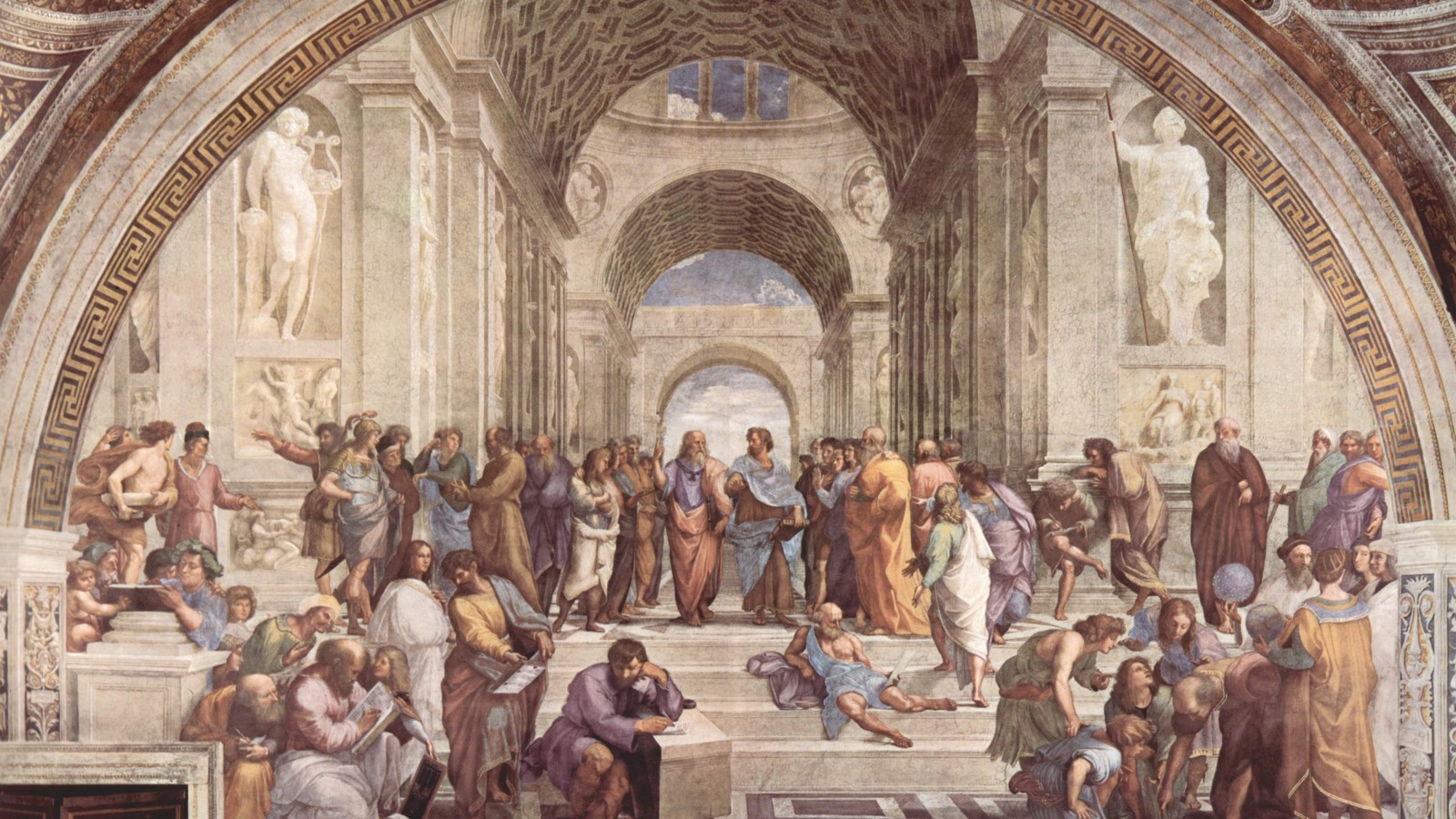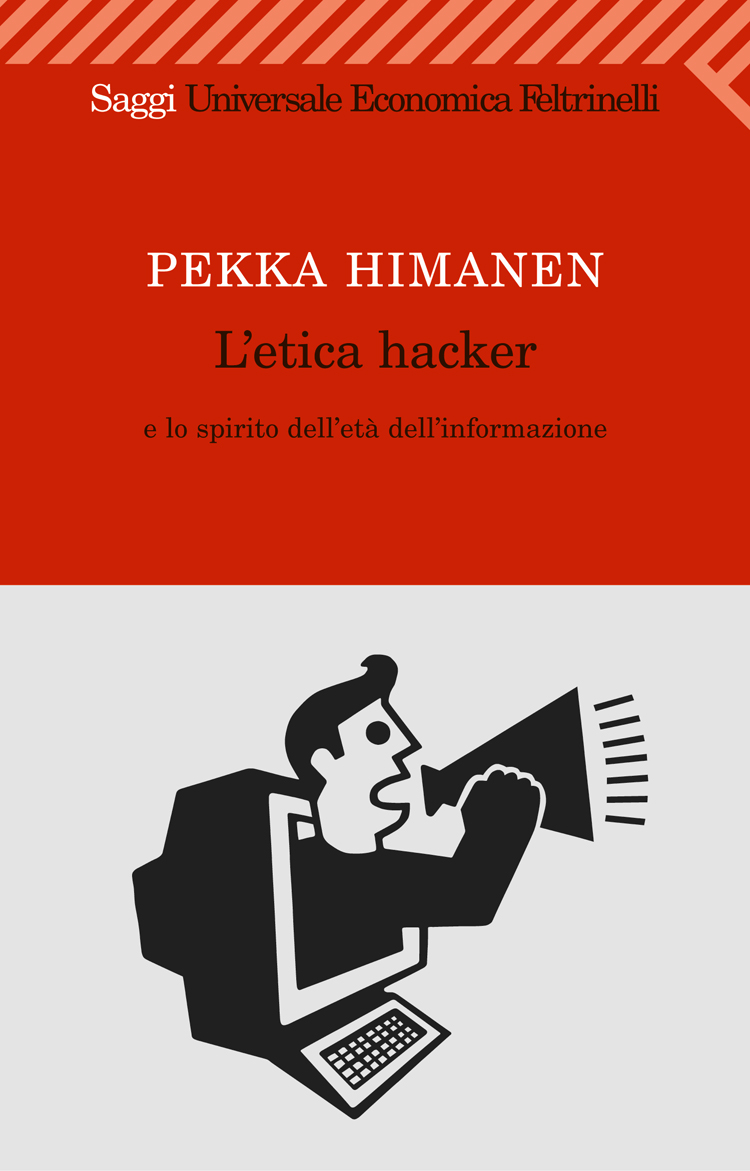
A few days ago, after ten years from the first reading, I happened to take up a book which was very important to me: "The Hacker Ethic and the Spirit of the Information Age" by Pekka Himanen.

As often happens when it comes to books that marked me deeply, I could not resist the temptation to take it back in hand and start to read it again.
My first reading is usually linear. As if I just let myself be carried away by the author within the discourse. Subsequent readings, instead, are characterized by a non linear trend.
I often re-read several times the same steps. Searching for reading keys. Frequently stopping and investigating. I mark notes compulsively or browse the book in search of another place I need to connect to something that’s been on my mind. This time, though, I literally froze. While leafing and smelling the book, I ended up in front of a short chapter I did not remember, which now has caught my attention because of its title: "The Academy and the Monastery".
Ten quick read pages I might not have given much mind during my first reading, but now – after many years – I realize how deeply they affected me. In a way I could not have imagined. Here’s, then, revealed the reason for these lines. I want to share with you some thoughts I’ve fallen into by re-reading these words, especially in relation to the project we are carrying out, The Open Source School, and the forthcoming research and co-design lab – XYZ – to be held in Bari at the end of July.
Let’s start with the first theme:
The Opening
Here the author tells us about Linus Torvalds and his idea of creating a free and open operating system (what will be called LINUX). Torvalds was a student at Helsinki University and had the opportunity to meet professor Andrew Tanenbaum, who had designed Minix, an operating system very similar to what we would have then known as UNIX. On August 25, 1991 Torvalds posted a message on the network: "What would you like to see most in Minix?" announcing that he was developing a free operating system. He received in response different ideas and even collaboration proposals. It was the birth of a movement which in the years that followed would have led to the development of a global community that would have gathered around the project.
The features of this process, according to Pekka Himanen, are the following:
-
The work was divided into independent modules, developed by groups of different people – in competition with each other (on individual modules) while cooperating (on the entire development process). The initial group, headed by Torvalds, was not secured by any permanent position of authority. The group retains its authority only as long as the choices it take are consistent with the values and the will of the community that had gathered around the process/project. If the “leading” group should fail to the principles of openness and sharing, the community would bypass it, going ahead on their own.
- The work of the various groups is organized with a "releasing” system based on the following X.Y.Z structure, where there is always a "stable" version (e.g.: 1.0.0) and a version in development (e.g.: 1.1.0 ). The X grows only when an important change occurs or a substantial change is made. The great innovation Linux brought is not the operating system, but the open social dynamics that has been implemented to realize the project (as stated in the essay “The Cathedral and the Bazaar”, by Raymond).
To simplify, we could say that everything begins like this: there’s a problem that someone considers significant. We could have to deal with the problem or the goal, but most of the time a first possible solution is also shared. The 0.1.1 version (to use X.Y.Z LINUX system). In the open model any person has the right to use, test and further develop the solution. It is possible if together with the problem and the solution the sources are also provided and spread.
In the "open source model" the release of this ind of data implies two things:
-
that each "improved" version (e.g. the 0.1.2), developed from the first version (0.1.1), will have to release the source code exactly as done before;
- and who has contributed to it must always be quoted whenever one of the versions is shared.
The Academy and the Monastery
At this point, the author returns to the chapter’s title, addressing the issue with an analogy. He speaks of the Academy model as opposed to that of the monastery.
At this point the author returns to the title of the chapter, addressing the issue with an analogy. He speaks of the Academy model as opposed to that of the Monastery.
Pekka Himanen believes that the Academy, even more then the Bazaar, embodies the core values of the open-source culture and the hacker ethic:
- scientists provide their work so that others can use it to carry it forward to further development; research is based on the idea of an open and self-regulated process (this is a milestone in scientific ethics – as Robert Merton asserts);
- academies are steered by a sort of "skepticism" which is the continuation of Synousia of Platonic Academy, which provided for an approach to the "Truth" through critical dialogue;
- scientific ethics requires that theories are collectively built and their perceived shortcomings gradually eliminated through constant and iterative criticism by the entire scientific community.
The reason why an "open source" or "hacker" model works so well is due to the fact that in addition to realize their passions through recognition linked to peer recognition, as is the case for scientists, this model (so similar to academy) turns out to be ideal for the creation of information.
The academic ethics implies that anyone has the right to use, test and further develop the theories developed so far. The chain of conversations and interactions that produced (so far) the final result are more important than the final result itself (which actually doesn’t exist – as K.Lynch asserts).
In other words, Albert Einstein was able to describe relativity because Michael Faraday, Antoine Lavoisier, the Pythagoreans and so on were there.
But also scientific ethics, like the hacker one, implicates two very important things: sources are always quoted (plagiarism is abhorred) and new solutions must not be kept secret, but shared for the benefit of the community.
This produces a model of knowledge which is incremental and iterative, which makes us able to progress. As Pekka Himanen says, so far there have been many significant evolutions (the Y in X.Y.Z developing model) but only 3 or 4 changes of paradigm (the X in X.Y.Z developing model): Aristotelian-Ptolemaic Physics, the Newton one, Quantum Physics and now the next is assumed, “The Theory of Everything”.
Here's a difference between scientific and hacker ethics. Hackers would not have suggested to move towards the Theory of Everything, spasmodically looking for the X’s progress.
The hacker model
The "typical" hacker learning process starts detecting of an interesting problem, working to solve it using a variety of sources and then submitting the solution to prolonged testing. Very often these are non-linear paths guided by passions more than a formalized method. For instance, it has been verified as the use of "reverse engineering" is recursive. Another typical aspect of this model is that you’re never ashamed to ask for help from those who know more. Disintermediation, in fact, allows you to transmit knowledge in a smarter way, because those who know more will transmit to those who will come to a level that would develop the need of rare knowledge (and not to anyone); while most of the network knots – in possession of less rare information – will create the fertile ground in which, through continuous and reciprocal exchange, a substantial quality of the information as well as a collective consciousness will develop faster. The hacker learning model strength is that everyone learns something and then teaches it to others. When a hacker is studying the source code of a software, he often further develops it so that others can learn from this work. Around the various problems, a constant and continuous conversation with several voices develops. A critical, iterative and evolutionary polyphony. The reward for participating in this process is peer recognition.
This model is defined by Pekka Himanen "The Network Academy".
A learning environment constantly evolving, created by the same hackers.
A model that has many advantages. In this model the teachers or builders of information sources are often the ones who have just learned something. This is useful because someone recently engaged in the study of a subject is more likely to teach it to others, compared to an expert that is no longer familiar with it and, in a sense, lost the mastery of thought mechanisms neophytes have. For an expert, to empathize with those who are learning something requires levels of simplification he often resists for intellectual causes. And not necessarily the expert can find satisfactory teaching elementary concepts. On the contrary, a student might feel it an extremely rewarding activity, since – normally – he doesn’t have the position of instructor and not many opportunities to use his talents are commonly offered.
Again, this hackers model resembles Plato's Academy, where students were not considered targets in the knowledge transfer process (such as vessels to be filled), but fellow students in the continuous learning process that life is. In the Academy the teachers’ purpose was to reinforce learners in putting problems, developing lines of thought and criticism. Today we would say that teachers were considered facilitators, whose purpose was not to inculcate notions but to carry disciples along the streets of critical thinking, starting from arguments and inclinations of the disciples themselves.
The principle of Plato’s Academy according to which "the free individual should not be forced, like a slave, to learn any discipline" is totally in contrast with that of the monastery (and today’s schools), whose spirit is represented by the monastic rule of Benedict: "to speak and teach it up to the teacher, shut up and listen befits a disciple."
Today, in fact, our schools look more like the monasteries than Plato’s Academy model. Its merit is to stimulate direct co-operation between individuals rather than competition.
And that generates great results.
That’s why we want to co-created the Open Source School.
And that’s why we invite you to subscribe to our 3 labs, made up to co-design the school itself.
→ All the information and the application form is online here
→ The report of activities carried out during the workshop is online here.


